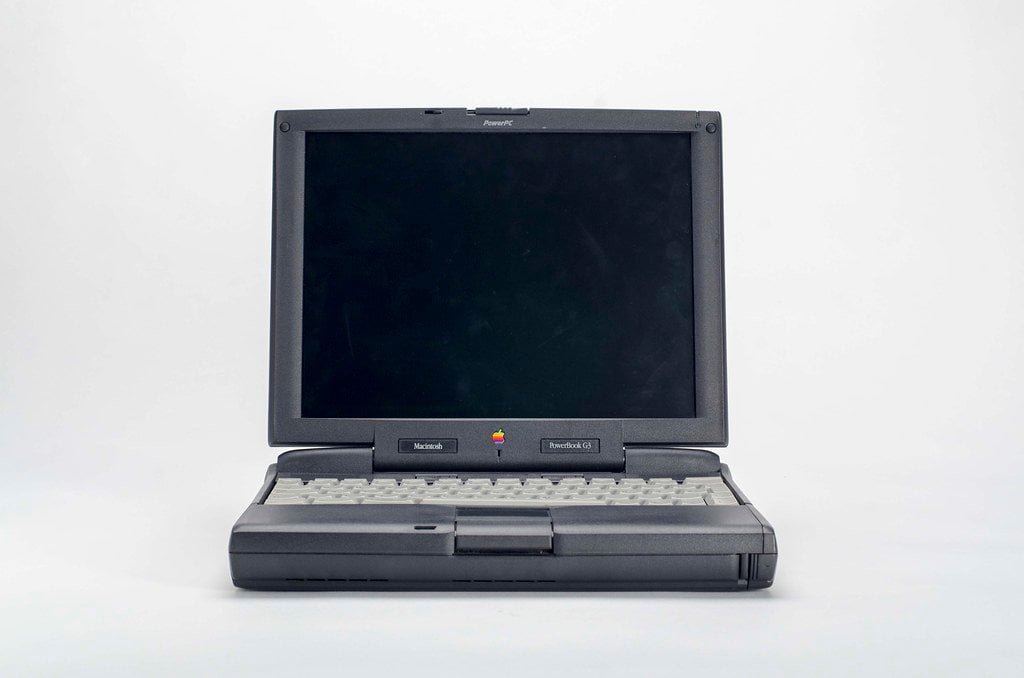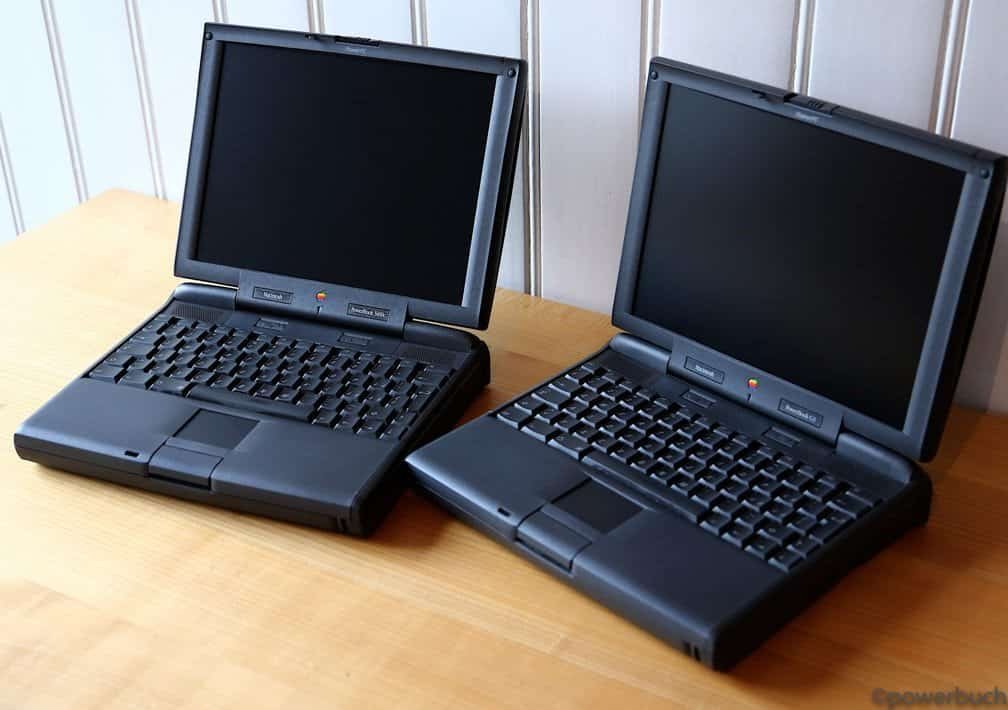The year was 1997, and Apple was about to unveil a revolutionary piece of computing history — the Apple PowerBook G3. Fast forward to 2023, and the PowerBook G3 stands as a classic, with a legacy that continues to captivate Mac enthusiasts worldwide.
On November 10, 1997, Apple introduced the world to the PowerBook G3 (Kanga), a notebook computer that would redefine portable computing. Boasting a 250 MHz PowerPC 750 G3 processor, a 12.1-inch color LCD display, 32 MB of RAM, a 5 GB hard drive, a 1.44 MB floppy drive, and a tray-loading 20x CD-ROM drive, the PowerBook G3 set new standards for power and portability in its time. It was a tool embraced by professionals, artists, and students alike, offering the robustness and flexibility needed to tackle a variety of tasks.
The Original PowerBook G3 marked a pivotal moment as the first PowerBook to utilize the “Third-Generation” (G3) PowerPC 750 processor. This innovation brought forth a new “backside” level 2 cache, pushing the boundaries of what was expected from a notebook. Surpassing the performance of many desktop systems, the G3 processor placed the PowerBook G3 in a league of its own.
Despite being on the market for less than 5 months, the Kanga (as the first PowerBook G3 was fondly called) was not without significance. It served as a stopgap system, enabling Apple to release G3 PowerBooks earlier while preparing for the groundbreaking PowerBook G3 Series. Although quickly deprecated, the Kanga found favor among users for its compatibility with interchangeable expansion bay modules, batteries, and peripherals from previous PowerBook models.
The PowerBook G3’s reign, however, was short-lived. On March 14, 1998, Apple discontinued the PowerBook G3, making way for newer and more improved models. Despite its brevity, the PowerBook G3 left an indelible mark on the world of computing. It was Apple’s most quickly deprecated PowerBook, but its impact resonated far beyond its discontinuation.

Fast forward to today, and the PowerBook G3 celebrates its 26-year anniversary. The legacy lives on through its iconic design, powerful hardware, and innovative features. The Kanga may have been replaced, but its influence can be traced to subsequent Apple products’ evolution. The PowerBook G3, though discontinued, remains a classic that many still hold dear, showcasing Apple’s commitment to pushing the boundaries of technology.
The PowerBook G3’s impact on the computing world cannot be overstated. Its compact size, powerful specifications, and groundbreaking design paved the way for future innovations. The Kanga’s smaller dimensions, compared to subsequent PowerBooks, and its lasting influence are evident in the continued adoration of Mac fans worldwide.
The PowerBook G3’s influence extends beyond its time, inspiring countless other products in the tech industry. Its success laid the groundwork for future Apple laptops, setting a precedent for power, portability, and sleek design. Even as we embrace cutting-edge technology today, the PowerBook G3 serves as a reminder of the pivotal moments that shaped the trajectory of modern computing.
The Apple PowerBook G3 remains a timeless classic in the world of computing. Its brief but impactful existence, innovative features, and enduring legacy make it a symbol of Apple’s commitment to pushing boundaries. As we celebrate 26 years since its launch, the PowerBook G3 stands as a testament to the evolution of technology and continues to hold a special place in the hearts of Mac enthusiasts around the globe. Though the PowerBook G3 may have been discontinued, its impact on the world of computing will never fade away.

Original PowerBook G3 Details
| Introduced | November 10, 1997 |
| Discontinued | March 14, 1998 |
| Model Identifier | 313 |
| Model Number | M3553 |
| Order Number | M5993LL/A |
| Original Price | $5,700 |
| Colors | Dark Grey |
| Weight | 7.5 Ibs. 3.401 KG |
| Dimensions | 1.9” H x 10.5” W x 8.4” D 6.09 cm H x 29.21 cm W x 24.13 cm D |
PowerBook G3 Tech Specs
Processor
| Processor | PowerPC 750 G3 |
| Processor Speed | 250 MHz |
| Architecture | 32-bit |
| Number of Cores | 1 |
| System Bus | 50 MHz |
| Cache | 64 KB L1 512 KB backside L2 |
| Coprocessor | Built-in FPU |
Storage & Media
| Storage | 5 GB |
| Media | 1 – 1.44 MB floppy 1 – 20x CD-ROM Tray-loading |
Memory
| Built-in Memory | 32 MB |
| Maximum Memory | 160 MB |
| Memory Slots | 1 – PowerBook G3 |
| Minimum Speed | 60 ns |
| ROM | 4 MB |
| Interleaving Support | No |
Display
| Built-in Display | 12.1″ Color TFT Active-matrix Display |
| Resolutions | 800 x 600 |
Graphics
| Graphics Card | None |
| Graphics Memory | 2 MB |
| Display Connection | 1 – HDI-15 |
| Display Modes | None |
| External Resolution | None |
Expansion
| Expansion Slots | 2 – Type II or 1 – Type III PC Card |
| Hard Drive Interface | ATA |
| Bays | 1 – 5.25-inch bay |
Connections
| Wi-Fi | None |
| Ethernet | 10BASE-T |
| Modem | 33.6k |
| Bluetooth | None |
| Infrared | 1 – 1.152 Mbps |
| ADB | 1 – External 1 – Internal for Trackpad |
| Serial | 1 |
| SCSI | 1 – HDI-30 |
| Floppy Port | None |
| Audio In | 1 – 3.5-mm analog input jack 1 – Built-in microphone |
| Audio Out | 1 – 3.5-mm analog output jack 4 – Built-in speakers |
| Display | 1 – HDI-15 |
| Security Slot | 1 – Kensington cable lock |
Keyboard and trackpad
| Keyboard | Built-in Full-size 77-key (U.S.) or 78-key (ISO) incl. 12 function and 4 arrow keys |
| Trackpad | Built-in Solid-state trackpad (Tap, double-tap, and drag) |
Software
| Original OS | Mac OS 8 |
| Maximum OS | Mac OS 9.1 |
| Firmware | Macintosh ROM |
Power
| System Battery | 47 Wh Lithium-Ion (M4895) |
| Backup Battery | 7.2 V 60 mAh NiMH (922-2692) |
| Battery Life | 2-4 hours |
| Maximum Continuous Power | 45 W |
| Line Voltage | 100-240 V AC |
| Power Adapter | 45 W AC (M4895) |
Further Reading and References
- PowerBook G3: Technical Specifications – Apple Support
- PowerBook G3 – Wikipedia
- Kanga PowerBook G3 – Low End Mac
- PowerBook G3 Series Service Source (PDF) – Apple Repair Manuals
- Powerbook G3 kanga (3500c) – Powerbuch
- Apple PowerBook G3 “Kanga” prototype (Photos) – Flickr
Disclaimer: The data presented in this article is under continuous development and has been manually collected from various sources based on their availability. The author of this article may revise this dataset as additional research is conducted and reviewed. Please note that the information is provided “as is” and “as available” without express or implied warranties. The author cannot be held responsible for any omissions, inaccuracies, or errors in the published information. Any warranties relating to this information are hereby disclaimed.
Last updated: December 17, 2023
